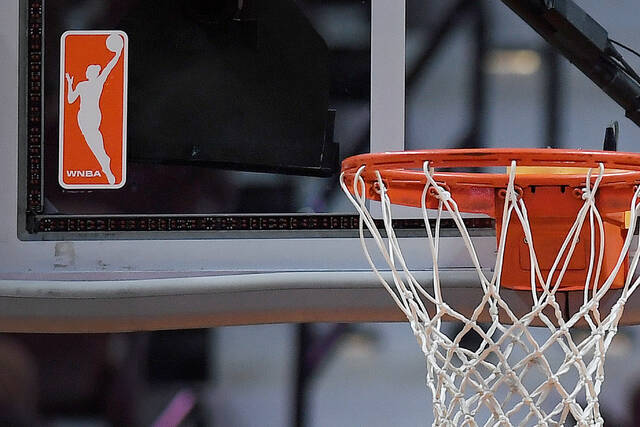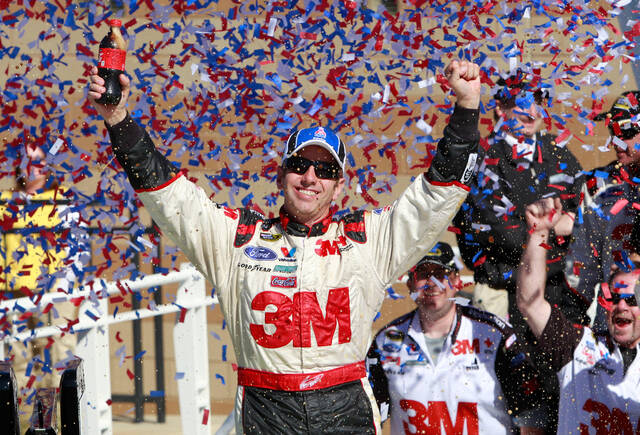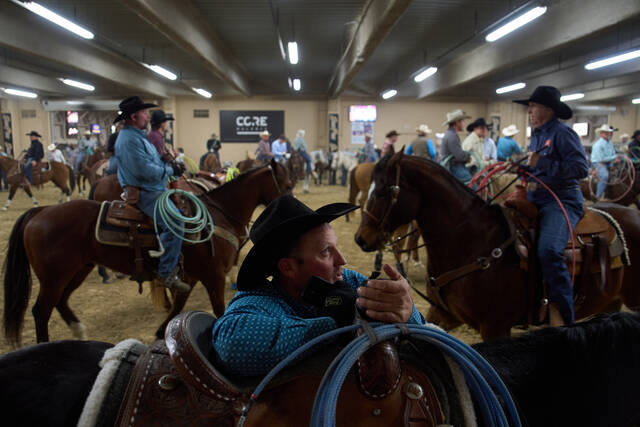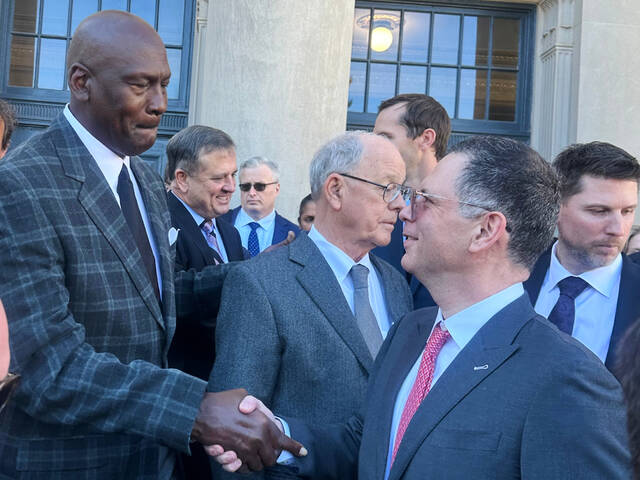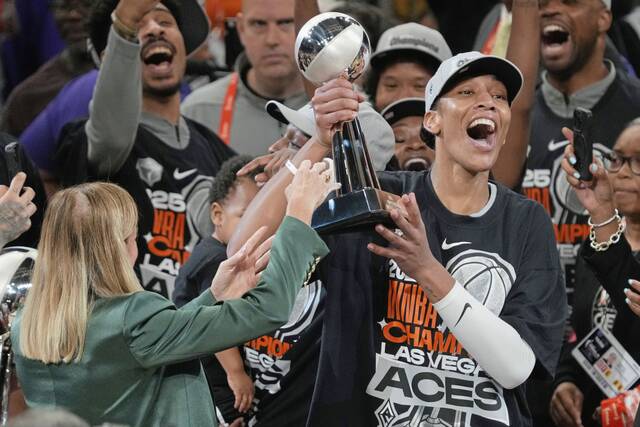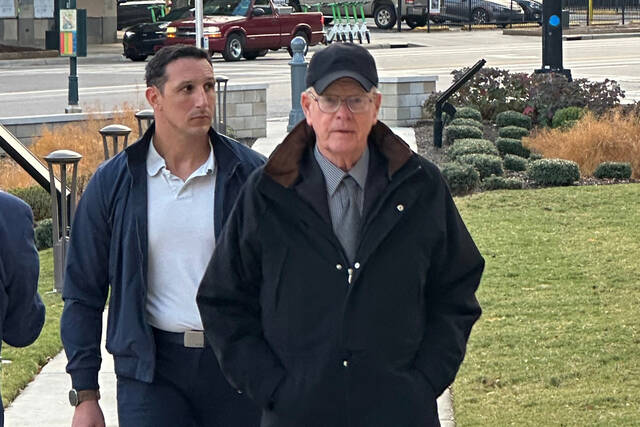I’m not a huge fan of “The Office.”
It’s OK. Not great.
The humor is forced. The characters became two-dimensional characterizations of themselves after the third season. And I found the plot lines repetitive.
There. I said it. Unpopular TV hot take for you.
But I ran through five episodes in a row in the background on television while I was working Thursday.
What else was I going to watch?
The Penguins in Columbus? My alma mater Syracuse in the ACC tournament? Duquesne hunting for its first Atlantic 10 tournament win since 2015?
No. None of those options were available. Because Thursday was a day when the sports world ground to a halt in a manner the United States hasn’t seen since the attacks of Sept. 11, 2001.
The difference was, that day, we at least saw who was attacking us and what the results were.
That’s not the case this time as the coronavirus was the reason why all of entertainment — even beyond sports — was forced to halt.
Back on that day, you turned on the news and saw the horrible images on television. You knew why the whole country was about to be put on hold for a while.
However, on Thursday, I put on the news at 11 p.m. and the first image I saw was a coronavirus “heat map” of Pennsylvania. It had 22 red dots on it, all of them out east, representing the confirmed cases of covid-19 in our state.
Nothing but white in Allegheny County and the western part of the state. Yet the top story was about the county going into an emergency declaration anyway.
Pittsburgh Mayor Bill Peduto can talk about simply “flattening the curve” of potential illness all he wants. Health officials can tell us “not to panic.”
At the same time, though, monkey gangs are fighting each other in the streets of Thailand.
Hundreds of hungry monkeys swarm across Thai street as 'rival gangs' fight over food after tourists who normally feed them stay away because of coronavirus https://t.co/lQZ0sOzwDF pic.twitter.com/8TgrCTBrQ8
— Daily Mail Online (@MailOnline) March 12, 2020
Meanwhile back home, if the Pittsburgh Catholic Diocese is going so far as to encourage church fish fries to become “takeout only,” it’s a little hard to suggest we aren’t panicking over a disease that isn’t impacting anyone in our city.
Yet.
But if you are a sports fan, your coronavirus fatigue over being told one thing and experiencing another is probably far worse than the regular dude who doesn’t know that hockey is played on ice and never fills out a tournament bracket.
The decisions being made to cancel all these events — sporting and otherwise — are wise, if … if … indeed this virus is truly the dangerous pandemic it is made to be. Not the overhyped flu many perceive it to be.
To be clear, I understand and support our nation’s abundance of caution. That extends to the decision makers at the NCAA, its various conferences, the NBA, NHL and MLB.
Boy, they all had a long and winding road of reaching those decisions this week, though, didn’t they?
The timelines were confounding. Many statements were confusing. And the execution was often contradictory. That’s why so many sports fans are dubious of the rationale and motives for why the cancellation decisions were made.
For instance, did we really need to see Utah Jazz player Rudy Gobert become “sports patient zero” before we stopped the games? We all knew the threats. We all heard the science and the risk factors long before he got sick.
The medical info was scary enough. That’s why all these leagues were getting ready to play in front of empty buildings to begin with, right? Did we physically need to witness an athlete getting infected before we believed they were susceptible, too?
That’s pretty skewed thinking. Especially since, in theory, this was all about prevention anyway, right? Waiting for the first athlete to test positive is being reactive. Not proactive. Which was allegedly the goal.
Why did the NHL and MLB only feel comfortable postponing once the NBA did it? I thought this was about public health. Not the perception of keeping up with the Joneses.
Oh, and the empty arena thing. What kind of a weird half-measure was that? Cancel the games or don’t. That made it look like the sports were OK with giving up ticket revenue but were willing to run the risk of infection to keep the games on television for advertising money.
And the media interviewing players from distance or behind a rope? C’mon! If this disease is truly that infectious, the media and players could’ve swapped it back and forth whether they were 3 or 4 feet away from each other.
Not to mention media members giving it to each other.
Why did the St. John’s-Creighton Big East Tournament game tip off at noon Thursday when every other conference canceled its games by then? And why did the Big East eventually cancel at halftime?
Maybe the Big East got a covid-19 scientific memo they previously lacked? Is the Wi-Fi worse at Madison Square Garden than it is in Greensboro, N.C.?
Seriously. What did the conference learn or decide about this illness within those 58 minutes?
The NCAA should’ve been all over that. I know each conference is an individual entity. But they were all playing for the common goal of gaining entry to the NCAA Tournament. The NCAA should have said to the conferences: “Stop playing. We’ll take your regular season champion if we go through with this national tournament.”
Which, eventually, they decided against doing anyway.
After the Big East game was eventually canceled at halftime, Fox play-by-play man Tim Brando bemoaned the bad optics of that game starting in the first place because there was no direction from the NCAA.
He’s right. But why do optics matter? The debate about playing should’ve been about public health. Not Twitter shaming.
The ACC almost started at noon, too. After the mid-warmup stoppage between Clemson and Florida State, ACC Commissioner John Swofford told ESPN the conference had a “discomfort” with continuing play Thursday.
Clearly. You were already in an empty building, John. Why did that “discomfort” become so severe that you pulled the plug approximately 15 hours after Gobert got sick?
I wonder if Swofford was the one who felt “discomfort.” Or maybe it was the ACC’s lawyers when they realized the extent of the legal exposure for the conference had they decided to play in the wake of Gobert’s diagnosis.
It’s inconsistencies like that which seem to be frustrating fans. Such wishy-washy behavior is leaving many people scratching their heads.
Then washing their hands. Again. Gotta wash your hands, folks.
The lack of conviction from our various leagues and fuzzy messaging from our politicians — in both parties — about the illness itself has done little to inspire confidence from the masses. That has fractured support for the preventive measures taken.
That’s not our fault. As either John Q. Public or Average Joe sports fan.
And it also makes me wonder what we do when covid-20 comes around next year.
Is that how it works with contagious viruses? Like movies? You just increase the number?
Well, if there is a sequel, I want no part of it. Because this original really stinks.




